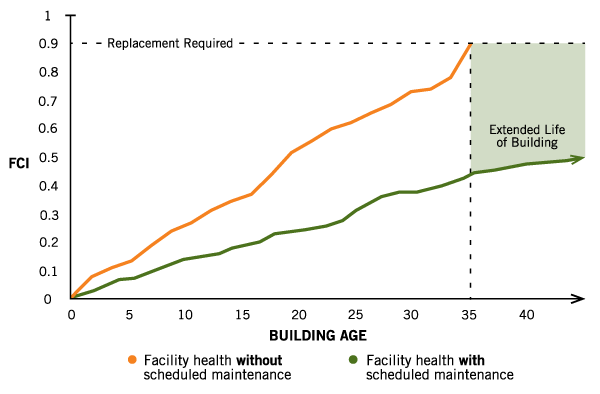Maintenance planning allows Facilities Services to proactively maintain BCIT campuses by identifying strategies for operational service provision. Plans are based on an assessment of existing facilities within the context of Institute-wide priorities. Plans apply to the three major categories of maintenance and ensure that non-emergency issues, usually related to larger, behind-the-scenes building systems, are addressed.
Good maintenance planning results in:
- Decreased equipment replacement costs over time.
- Decreased renovation costs because fewer large-scale repair jobs are needed.
- Decreased overhead costs due to increased system efficiency.
- Extended useful life for older buildings.
- Maximized useful life of new facilities.
Types of maintenance
Facilities maintenance is more than just fix and repair. Facilities Services plans for the following types of maintenance:
| On-demand | |
|---|---|
| Emergency |
|
| Routine & reactive |
|
| Scheduled | |
|---|---|
| Preventative |
|
| Programmed |
|
| Life-cycle analysis | |
|---|---|
| Predictive |
|
Impact of scheduled maintenance on FCI

There is a direct positive correlation between investing in maintenance and the extension of a facility’s healthy life cycle. We view buildings as live systems that age over time. Due to aging, deferred maintenance has a compounded negative impact on facilities and results in more dollars spent to remedy the issues. A Facilities Condition Index (FCI) of zero reflects a building that has no deferred maintenance, while an FCI of one would require full building replacement.
Common assessment tools for maintenance planning
The key assessment tools we use are Deferred Maintenance Deficiency (DMD) calculations, Facility Condition Assessments (FCA) and Facility Condition Indexes (FCI).